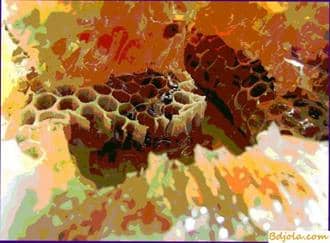
To feed bees with honey it is necessary in rare cases, as it is more expedient to leave fodder honey in honeycombs (not to pump out) and if necessary to substitute honey combs in nests of bees. Usually bees are fed with sugar syrup replacing honey, or honey in the following three cases:
– to replenish the supply of forage honey in the nests of bees with a shortage of honey in the hives in the spring until the appearance of flowers in the nature that produce a significant amount of nectar;
– to stimulate brood rearing in the absence of flowering honey-plants;
– to replenish the fodder stocks needed by the bees for the winter, and replace the poor quality (padevoy) honey to improve the wintering of the bees.
Белковые корма для пчел. Помидоры не опыляются.
Feeding base of beekeeping